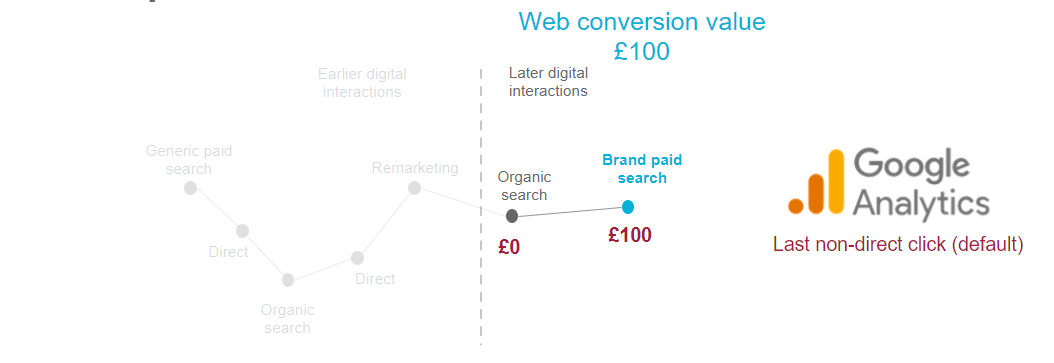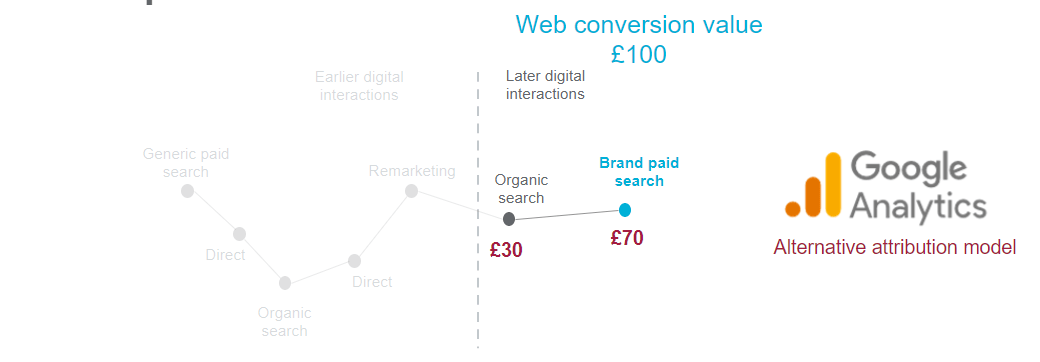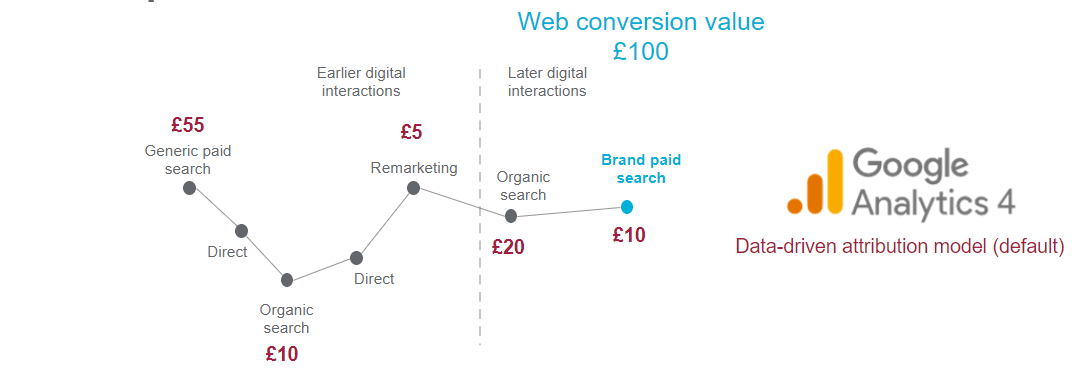
![]() Insights
Insights
The arrival of GA4 comes with an array of game-changing and innovative features. Built for the future of marketing and the changing multi-device landscape, attribution and modelling have evolved to better measure search, clicks and touchpoints leading to conversion.
A customer’s journey to make a purchase usually takes time and results in them visiting the website several times. Over the last 15–20 years there have been many changes in the industry making it much harder to join these touchpoints and visits together to accurately attribute the credit for that sale. The main three are:
The effect of the changes over recent years means that most visit paths leading to conversion are much shorter, often only showing the last one or two visits. The reality is that a huge amount of conversion paths are missing the earlier visits, and often the significant ones that raised awareness and ignited the customer’s interest in your website. In addition to the problem with joining paths together and attribution, these problems make the ‘users’ metric massively overstated and inaccurate.

In this example, all credit is given to the last touchpoint, and only the last two can be viewed in Google Analytics.
Using a different attribution model in Google Analytics allows you to give value to more than one touchpoint, however, there are still many earlier interactions that receive no credit.

By using GA4 and the in-built data-driven attribution model, we can now give value to the earlier touchpoints that were previously invisible.

Given the problems with Google’s original solution for tracking users, GA4’s new modelling is designed to fill the gaps in customer journeys. One of the key tools enabling the platform to implement modelling effectively is Google Signals. Google Signals holds data on its users logged into a Google account on their mobile or desktop devices if they have consented to ads personalisation.
This allows Google to associate data collected with that user across devices. Using Google Signals data, it’s able to join up the full cross-device paths much more accurately on a subset of your analytics data. This is what is referred to as the observed data for modelling purposes.
Modelling is where Google uses this subset of observed data to infer the behaviour of the rest of your data. The result is a more accurate reporting of the “unique users” metric and more complete conversion paths using both modelled and observed data.
One of the other major improvements that GA4 offers is a significantly better use of attribution. In Universal Analytics (UA), all main reports used the last non-direct attribution model and attribution models are only available within a separate ‘model comparison tool’.
In GA4, you can configure and choose the attribution model you want to use at a property level, and this will apply throughout the reports, interface and in the export of conversions to ad platforms like Google Ads and the GMP suite. Combined with the modelling that helps complete the gaps in conversion paths, this is a huge advance in GA4.
As well as the improvements to how attribution applies in the tool, the big news is that you get access to a new and much-improved data-driven attribution model. Data-driven attribution was previously only a feature that was available to those with GA360. This feature will now be available to all accounts and will be the default option when you create a property.
The data-driven model is based on a similar approach to the current version in Universal Analytics, whilst benefitting from some major improvements. Moving away from working with solely the last four touchpoints of a path, the new model adds further iterations and corrections in the calculation to do things like assess the closeness between the visit and conversion to determine importance, consider ad and touchpoint features to understand their importance and applies a correction for incomplete paths (i.e. whenever you look at a set of non-converting paths, a subset of them will go on to convert).
Google is fully transparent in their new approach to data-driven attribution and has published details of the mechanics of it for all to read and scrutinise.
Marketers generally agree that no attribution models are 100% correct in reporting the truth. The reality is that each provides an alternative perspective of the truth. However, when combined with the modelled paths, you can be confident that the new data-driven model will be as close to that truth as you can get. It is crucial to make the most of this innovation and adopt GA4 as soon as you can.
Interested to learn more about GA4?Register here to receive content from our 'GA4 Summit'

![]() Insights
Insights

![]() Insights
Insights

![]() Insights
Insights